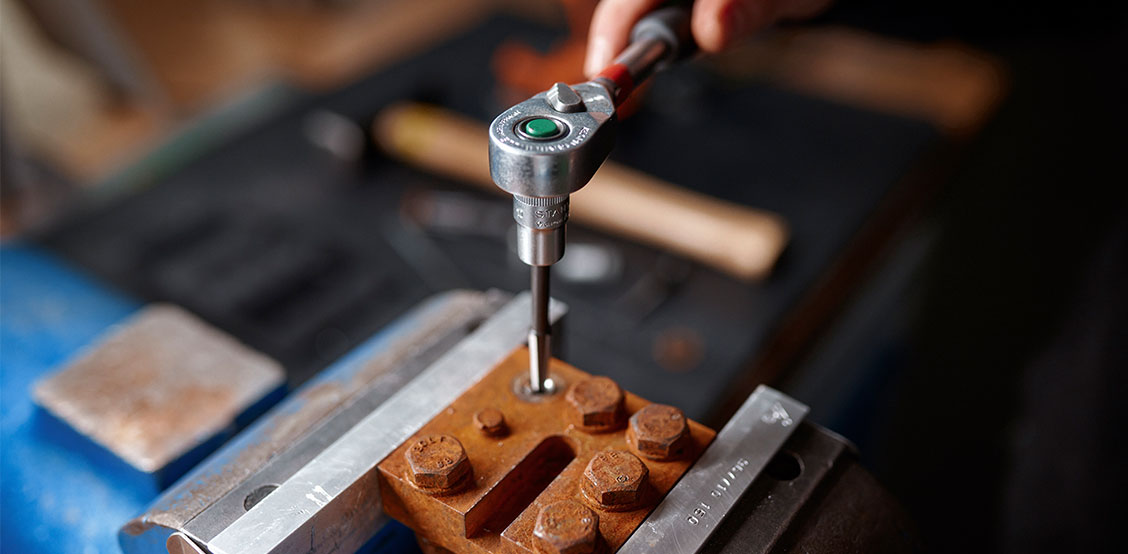11.02.2024
Got a screw that's stuck? These tips from the professionals can help!

There’s nothing more annoying than a screw that can't be undone bringing the job to a halt. As understandable as the urge may be to use excessive force, don’t overdo it! A screw that is stuck can rarely be removed using force. Quite the opposite: you might end up with an even bigger problem, such as a sheared or twisted screw head. Fortunately, proven methods exist for loosening stubborn fasteners. We’ll share them with you here!
01.
Penetrating oil
- Get a penetrating or multi-oil. These oils usually have very low viscosity, which allows them to penetrate deep into the thread to reduce the friction between the screw and the thread.
- Apply the oil as precisely as possible around the screw head. Be sure to use the little straw provided for this purpose, rather than just spraying it over a large area.
- Wait for a sufficient amount of time, and repeat the procedure several times. It can take several hours for the oil to penetrate far enough. In particularly stubborn cases we recommend letting it take effect overnight.
- Then try loosening the screw again, being careful not to apply too much force.
02.
Ice spray
- This second method exploits the physical properties of metal, since metal shrinks when it is cooled.
- Spray an ice spray from a home improvement store (not to be confused with ice sprays for cooling sports injuries!) onto the screw. This causes shock freezing that is well below the freezing point.
- The shock freezing breaks up the microstructure of any rust that may be present, and makes the screw shrink due to the cold temperature.
- Additional tip: after icing, a multi-purpose oil or penetrating oil should be applied to provide additional lubrication. Some ice sprays already contain a lubricating component.
03.
Heat
- If you have a hot air gun or blowtorch to hand and the materials are heat-compatible, you can also try heating the screw joint.
- The principle is the same as for icing – with the difference that the materials do not shrink when exposed to heat, but expand to different extents.
- Once the screw joint has cooled off a little, try to carefully loosen it. If necessary, lubricate the joint with penetrating oil after it has cooled down to provide additional lubrication.
04.
Rust remover
- If it's obvious from the outside that heavy rust is the problem, it often helps to use a special rust removal product.
- Rust removers penetrate deep into the thread and break up the structure of the rust.
- Important: If your rust remover does not contain a lubricating or conditioning component, you should always lubricate with penetrating oil after every quarter to half turn to prevent damage to the thread from abrasive rust particles.
- Please be sure to follow the manufacturer's instructions when applying the rust remover!
05.
Screw extractor and nut splitter
- If the nut is twisted or the screw head is damaged, it's unlikely that the screw can be removed without the aid of special tools.
- If a screw is stuck in the thread and the screw head is damaged, a screw extractor will help. This is done by drilling out the screw and then driving the screw extractor into the hole. It replaces the damaged profile or the damaged screw head.
- If the edges of a screw head or nut no longer provide a firm grip for a ring spanner or open-end spanner, a nut splitter can come in handy. It is placed around the nut/screw head, fixed in place, and then used as a force loading point for loosening the nut/screw head.
- Important: familiarize yourself with the exact use of these special tools beforehand and follow all of the manufacturer's safety instructions!
Company
Service
2025© All Rights Reserved
